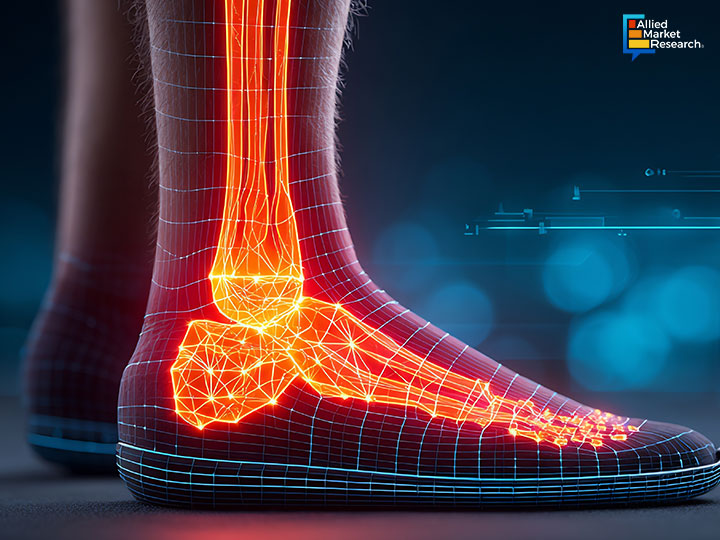Innovations and Practical Uses in Tendon Repair Solutions

1 Jul
2025
Highlights:
-
Introduction
-
Collagen and PRP boost healing support
-
Smart tools and grafts aid recovery
Tendon injuries can be painful, long-lasting, and difficult to treat. Over the years, the methods used to help repair damaged tendons have changed a lot. In businesses, where medical professionals, product developers, and health service providers work closely, it’s important to understand how tendon repair tools, supplements, and treatment solutions are evolving. This blog focuses on the key products and approaches being used today for tendon repair.
Understanding How Tendon Healing Works
Tendons connect muscles to bones. When they are torn or inflamed, movement becomes difficult and painful. Tendon repair depends on several factors such as blood supply, age, injury level, and the person’s overall health. One of the biggest challenges is that tendons heal slowly. That’s why there’s a growing focus on tools and products that can help support and speed up the process.
For minor tears, non-surgical options like physiotherapy, rest, and collagen-based supplements are commonly used. When the damage is serious, surgical procedures are necessary. Regardless of the method, proper support for healing is vital, and this is where a range of products and techniques come in. According to Allied Market Research, the tendon repair industry contributed to $2.4 billion in 2024 and is expected to reach $4.1 billion by 2034, citing a CAGR of 5.8% during 2025-2034.
Products That Support Tendon Recovery
Collagen supplements have now gained attention as a supportive product in the tendon recovery process. Collagen is a protein found naturally in the body. It helps maintain the structure of tendons, ligaments, skin, and cartilage. When the body is healing from tendon injuries, adding more collagen through supplements can help provide extra support.
A recent report by Straight.com featured various collagen supplements and explained how some of them are made specifically to support joint and tendon health. Products like Vital Proteins Collagen Peptides, Sports Research Collagen Peptides, and BioCell Collagen have been recognized for their ability to mix easily into drinks and provide hydrolyzed collagen, which the body absorbs more easily. Although not a direct treatment, these supplements are being used more often alongside other methods to support long-term healing.
Apart from collagen, surgical products like sutures, grafts, and scaffolds are used during tendon repair procedures. These tools need to be flexible, strong, and safe for use inside the body. Many companies are now designing bioengineered patches that mimic the structure of tendons, allowing natural tissue to grow into them over time. These are typically used in rotator cuff surgeries and Achilles tendon repairs.
Another area of focus is platelet-rich plasma (PRP) injections. This is a treatment where a patient’s own blood is processed to concentrate on the platelets, which are then injected into the injured tendon area. The idea is to use the body’s own growth factors to support healing. Though studies show mixed results, it is being used widely in sports medicine and orthopedic clinics.
Changes in Clinical Practice and Material Advancements
In early 2025, several orthopedic and sports medicine centers have reported growing interest in combining surgical and non-surgical solutions for tendon healing. Clinics are not just relying on one method but are using a mix of surgery, physical therapy, collagen support, and regenerative medicine.
Companies are now designing tendon implants that are stronger and more resistant to wear. In January 2025, a clinical study in the U.S. showed that newer tendon scaffolds with collagen and elastin combinations are performing better in recovery cases than older synthetic versions.
Also, wearable technology is being introduced to monitor recovery. Devices that track range of motion and stress on healing tendons are being tested in rehabilitation centers. These tools help doctors and therapists adjust recovery plans in real-time.
Meanwhile, research is also being conducted on how nutrition affects tendon healing. While collagen is the most talked-about supplement, studies are also exploring the roles of vitamin C, magnesium, and certain amino acids in tendon repair. A healthy diet is now seen as more important for healing, especially for athletes and older adults who often get tendon injuries.
Looking at the Broader Use of Tendon Repair Tools
The use of tendon repair products is no longer limited to just hospitals. Sports academies, physiotherapy chains, and orthopedic clinics are using these solutions daily. The business-to-business interest is strong in areas where athletes, labor-intensive workers, and aging individuals seek fast and steady recovery.
Buyers now focus on how safe and reliable tendon repair products are. They look for clinical testing, FDA or CE approvals, and long-term results. There’s also growing demand for eco-friendly materials and gentler treatment methods, pushing developers to meet higher standards.
Pricing, supply chain stability, and ease of integration with other therapies also play an important role in choosing the right tendon repair products. Since many treatment centers work under insurance frameworks, cost-effective solutions that also meet quality standards are in high demand.
Summing upTendon repair is a field that is evolving with new products, clinical practices, and user expectations. From bioengineered patches and collagen supplements to regenerative therapies and wearable tools, the landscape is full of innovations. While not every solution works the same for every patient, the combination of these tools is helping care providers offer more customized and effective recovery plans. All stakeholders such as suppliers, clinics, and researchers all tend to prefer tendon repair solutions that are reliable, proven, and easy to use within current healthcare systems.
Reach out to our team of experts to learn more about the evolving trends in the tendon repair industry.

Koyel Ghosh
Author’s Bio- Koyel Ghosh is a blogger with a strong passion and enjoys writing in miscellaneous domains, as she believes it lets her explore a wide variety of niches. She has an innate interest in creativity and enjoys experimenting with different writing styles. A writer who never stops imagining, she has been serving the corporate industry for the last five years.
Avenue: Entire Library membership of Allied Market Research Reports at your disposal
- Avenue is an innovative subscription-based online report database.
- Avail an online access to the entire library of syndicated reports on more than 2,000 niche industries and company profiles on more than 12,000 firms across 11 domains.
- A cost-effective model tailored for entrepreneurs, investors, and students & researchers at universities.
- Request customizations, suggest new reports, and avail analyst support as per your requirements.
- Get an access to the library of reports at any time from any device and anywhere.
Related Post
-
How are Submarine Cables Transforming Global Connectivity with Enhanced User Experience?
-
Endoscopy Procedures: Transformations in Techniques and Applications
-
AI-Powered Video Analytics: How the Product Actually Works for enterprises
-
Painting Robots: Transforming Precision Coating and Creative Applications
-
Innovations in Pharmacovigilance Systems Advancing Patient Safety
-
Understanding Edge Security: Keeping Data Safe Near the Source
-
Exploring the Use and Advancements of 3D Laser Scanners in Professional Applications
-
Reinforcing Industrial Controls with Smarter Tools and Training








